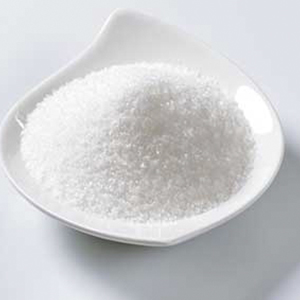
News
Aug . 13, 2024 13:12 Back to list
Exploring the Benefits and Uses of OEM L and D Aspartic Acid in Various Applications
Exploring OEM Aspartic Acid L and D Applications and Benefits
Aspartic acid, an alpha-amino acid, plays a crucial role in various biological processes and industrial applications. It exists in two stereoisomeric forms L-aspartic acid and D-aspartic acid. Both forms are essential in different contexts, particularly in food production, pharmaceuticals, and the manufacturing of dietary supplements. The term OEM, or Original Equipment Manufacturer, is increasingly becoming relevant in this sector, indicating an emphasis on customization and specialization tailored to the needs of different industries.
Understanding Aspartic Acid
L-aspartic acid is the biologically active form of the amino acid, naturally occurring in proteins and involved in the synthesis of other amino acids, including L-asparagine. It plays a vital role in the production of neurotransmitters and the urea cycle, helping to detoxify ammonia in the body. In contrast, D-aspartic acid, although less prevalent in nature, has gained significant attention in the fields of sports nutrition and hormone regulation. Research suggests that D-aspartic acid may enhance testosterone levels, potentially benefiting male fertility and athletic performance.
The Significance of OEM in Aspartic Acid Production
The OEM model allows manufacturers to produce L and D aspartic acid in ways that cater specifically to the unique demands of their clients. This can encompass various aspects, including the purity of the product, the formulation methodology, packaging, and regulatory compliance. By collaborating with OEM providers, companies can streamline their production processes, ensuring that they meet stringent industry standards while maintaining flexibility to cater to diverse markets.
Applications of L and D Aspartic Acid
1. Pharmaceuticals Both L and D aspartic acids are used in pharmaceuticals, particularly in the formulation of drugs targeting the central nervous system. L-aspartic acid is used for its role in neurotransmitter synthesis, while D-aspartic acid has potential applications in hormonal therapies.
2. Nutritional Supplements The sports nutrition industry has seen an explosive growth, leading to a rising popularity of dietary supplements containing D-aspartic acid. These supplements are marketed towards athletes seeking to enhance their performance, increase muscle mass, and improve recovery times. The ability to obtain high-quality D-aspartic acid through OEM partnerships allows manufacturers to deliver effective and safe products.
oem aspartic acid l and d

3. Food Industry L-aspartic acid functions as a flavor enhancer and is incorporated into various food products. The food industry utilizes it for its capacity to impart a savory taste, thus helping to improve the palatability of products ranging from snacks to sauces.
4. Agriculture Research has indicated that L-aspartic acid can play a beneficial role in plant growth, serving as a building block for proteins and a regulator in various metabolic pathways. It is being explored as an additive in fertilizers to promote better crop yields.
Benefits of Using OEM Aspartic Acid L and D
Partnering with OEM manufacturers to obtain L and D aspartic acid can provide several advantages
- Quality Control OEM manufacturers often adhere to stringent quality assurance protocols, ensuring that the aspartic acid produced meets high standards of purity and consistency.
- Customization Companies can request specific formulations suited for their particular applications, whether in food products, supplements, or pharmaceuticals.
- Cost Efficiency By leveraging existing OEM capabilities, businesses can reduce costs associated with research and development, allowing them to focus on innovation and market expansion.
In conclusion, aspartic acid—both L and D forms—presents various benefits across multiple industries. The OEM model plays a pivotal role in making high-quality aspartic acid accessible and tailored to specific needs, fuelling innovation and improving product offerings in pharmaceuticals, nutrition, food, and agriculture. As demand for customized solutions continues to rise, embracing OEM partnerships will be essential for businesses looking to thrive in a competitive marketplace.
-
Polyaspartic Acid Salts in Agricultural Fertilizers: A Sustainable Solution
NewsJul.21,2025
-
OEM Chelating Agent Preservative Supplier & Manufacturer High-Quality Customized Solutions
NewsJul.08,2025
-
OEM Potassium Chelating Agent Manufacturer - Custom Potassium Oxalate & Citrate Solutions
NewsJul.08,2025
-
OEM Pentasodium DTPA Chelating Agent Supplier & Manufacturer High Purity & Cost-Effective Solutions
NewsJul.08,2025
-
High-Efficiency Chelated Trace Elements Fertilizer Bulk Supplier & Manufacturer Quotes
NewsJul.07,2025
-
High Quality K Formation for a Chelating Agent – Reliable Manufacturer & Supplier
NewsJul.07,2025
